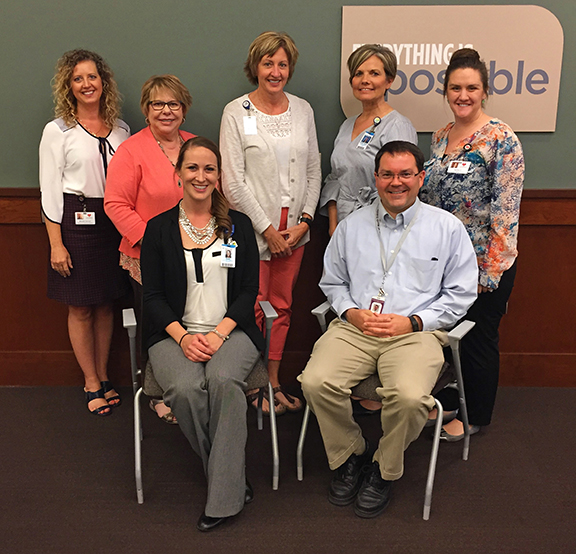
A regional Midwestern collaboration is implementing an effective intervention proving achievable for myriad groups across their care communities. The Fargo-Moorhead Patient & Family Engagement Workgroup, part of the Great Plains and Lake Superior QINs’ Coordination of Care (COC) initiative, is using teach-back and plain language to improve patient, family, and caregiver communication to reduce avoidable hospitalizations and adverse drug events.
Teach-back is a communication confirmation method used by healthcare providers to confirm whether a patient, family or other caregiver understands what is being explained to them. If a patient understands, they are able to repeat or “teach back” the information accurately. Access the Teach-Back Flyer.
Workgroup co-coordinators Kelli Sheeley RN, CHPN, readmission coordinator, Essentia Health, and Sandra Buchholz, community relations specialist, Hospice of the Red River Valley, explained that the workgroup is comprised of hospital health systems, home health, skilled nursing and assisted living facilities, hospice and senior community services like Meals on Wheels – a broad representation of the Fargo/NW Minnesota COC Community. “Within the group, there are nurses, social workers, lay people who are leaders of their organization, managers, directors and even a pharmacist,” said Sheeley.
The group tossed around ideas and explored where the gaps are within the continuum that touch all of themand where they could make an impact.

[box] Fargo-Moorhead Patient & Family Engagement Workgroup members, L to R: (Back) Brenda Iverson, Hospice of the Red River Valley, Bernie Johnson, Valley Senior Services, Dawn Hummel, Bethany Homes, Michelle Yesenko, Essentia Health, Sandra Buchholz, Hospice of the Red River Valley, (Front) Kelli Sheeley, Essentia Health, Jayme Steig, Great Plains Quality Innovation Network [/box]
The workgroup recognized that providing better communication to each other – as patients discharge from hospital, to transitional care unit, and eventually return home with some form of home health – meant that clear and consistent communication across all of those different sites of care was key.
Implementing teach-back training for multiple participants from multiple organizations meant overcoming some challenges. Sheeley said that because there are so many groups around the care community where people team up to tackle various issues, getting buy-in from organizational leaders to make the commitment, and then creating an organizational plan for implementation can be tough.
To overcome such challenges, the workgroup tapped into QIN resources for help. The Great Plains Quality Innovation Network held multiple teach-back train the trainer sessions and created an online teach-back training module that provides resources stakeholders can use to conduct customizable training for their health care team.
Sheeley said that implementing teach-back as a standard of communication isn’t going to happen overnight, but the benefits are being seen at different care settings across their community. “One of our nursing homes is starting to use teach-back in their care conferences and in their training with staff,” said Sheeley. “Not only reaching patients and families, but also ensuring their own staff can repeat back next steps and responsibilities.” Buchholz said in hospice using teach-back in medication administration, it is extremely important because they are teaching family members how to care for their loved ones at end of life.
Beyond group data on number of individuals trained, each participating organization has identified ways that they will track progress. For example: Essentia Health uses HCAHPS scores, pre/post conviction and confidence scales, and staff engagement, as well as readmission rates. Essentia Health-Fargo has seen a noticeable improvement in HCAHPS scores since implementing teach-back at the hospital. At each monthly meeting, the group discusses how each organization is progressing through their implementation strategy.
This success story originally appeared in the November 2017 issue of Coordination of Care Update, the Lake Superior Quality Innovation Network’s e-newsletter for coordination of care-related quality improvement in Minnesota.
